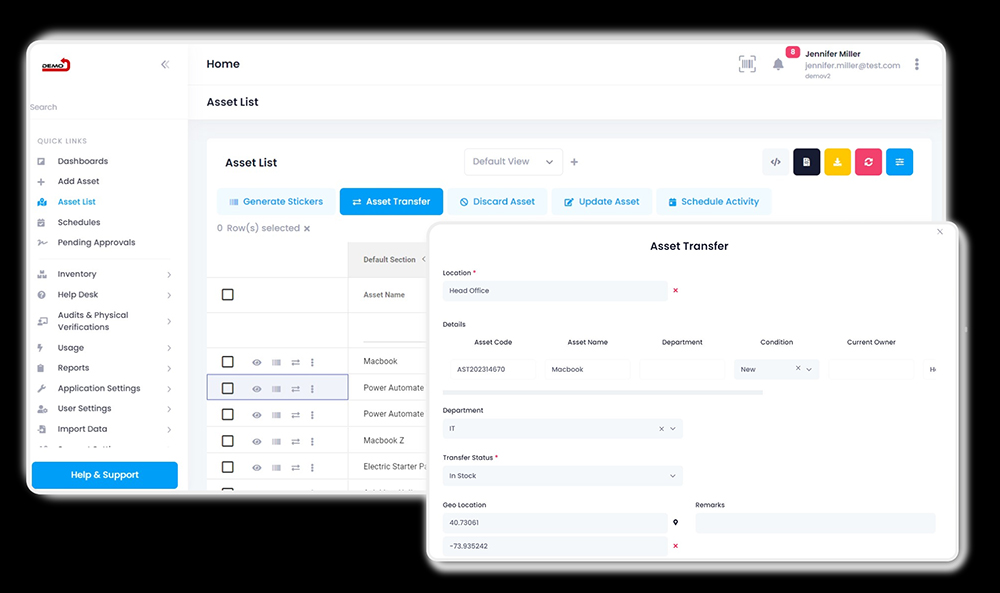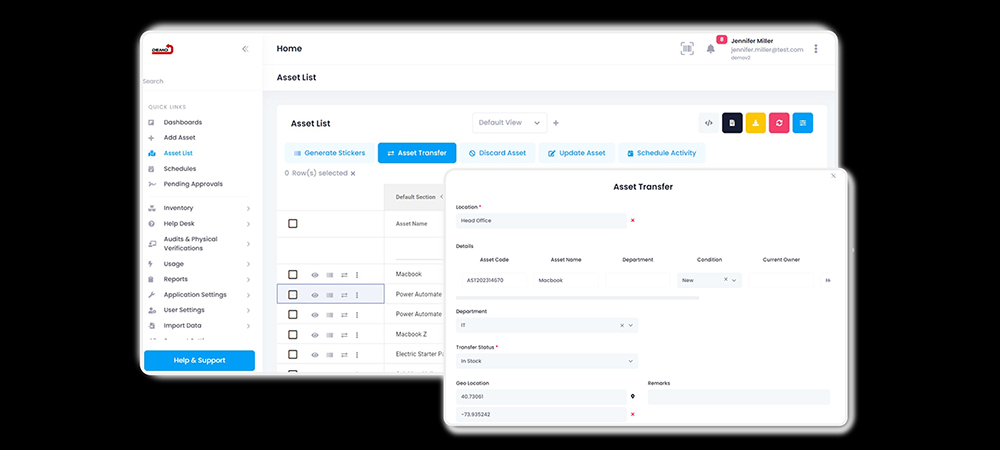Global asset-management technology company Asset Infinity, based in India, is transitioning many of its customers to using radio frequency identification (RFID) technology that automates the capture of data regarding equipment, tools and inventory. The company provides asset-management tools designed to last the full lifespan of any object, from its order and purchase to when it is discarded. The system can be linked with a company’s enterprise resource planning or SAP management system to monitor the condition, status and location of every item of interest.
Until recently, Asset Infinity has provided its solution via 2D barcodes or QR codes attached to assets that users periodically scan to access or update data. Now, businesses have begun using the solution with UHF RFID, 13.56 MHz HF RFID complying with the ISO 15693 standard, or Near Field Communication (NFC) compliant with ISO 14443. The company says RFID typically reduces the average amount of time workers require to count inventory from one month to only two days.

Chetan Chopra
Based on the successes of its early-adopting customers, Asset Infinity expects to transition many more of its clients to RFID. It also hopes to attract new customers, and to have 1,000 companies newly adopting the technology by the end of 2023, according to Chetan Chopra, Asset Infinity’s CEO. Soon after launching in 2016, the firm discovered that its customers needed a better way to manage everything from office equipment and furnishings to building-management equipment, vehicles, or oil and gas tools.
“It was shocking to see that these guys were managing all their assets in Excel spreadsheets,” Chopra recalls. “So when they adopted the Asset Infinity solution, they gained visibility of their assets, reduced loss and improved auditing processes. That was validation for us.”
Tracking an Asset from Ordering to Discarding
Subsequently, the company built various modules to support the management of an asset from when it is ordered until the end of its life. One module is dedicated to procurement. If a company needs to order a new laptop for a recently hired employee, for instance, that order can be placed through Asset Infinity’s cloud-based solution, which can be integrated with a company’s purchasing and management software to identify whether the computer is available—and, if not, to place the order.
In addition, Asset Infinity’s software manages each asset when it is received. Historically. the company provided a QR code or barcode label that was applied to every new item and was married in the software to the product’s serial number. It could then be assigned to a specific individual, rules could be placed for that item in the software—such as a requirement that it not leave the facility—and maintenance scheduling could be placed. The same software could be used by those who provide maintenance, as well as by those who track asset usage.

The cloud-hosted software includes a module for depreciation management as an object’s value changes. If anything goes wrong with that item, users can leverage the software to create a ticket or work order, and to assign a technician for repair. The technician can then access information about the asset in question, as well as update details about its maintenance. The software manages the item’s eventual recycling or disposal at the end of its life, and to monitor reorder requirements.
Businesses in various industries have been using the solution, including manufacturers, retailers, government entities, schools and aviation companies. As RFID readers and tags have evolved to become more effective and lower in cost, Asset Infinity has chosen to offer the technology as a more automated way to accomplish end-to-end management. The company offers hardware from several different providers. It supplies both handheld and fixed RFID readers, and it works as a reseller for such brands as Zebra Technologies, Honeywell, Chainway and Impinj.
The technology company works with customers to assess their requirements, based on the assets being tracked, the environments in which they will be managed, and the read distance and sensitivity that would suit their application. For example, Chopra says, in an office space containing a room full of laptops, “You don’t want a very long read range. More commonly, you would just pick up your handheld and scan for those tags.” On the other hand, a company with a large outdoor yard or warehouse may need a read range of 10 to 15 meters (32.8 to 49.2 feet) to locate pallets or large equipment.
Transitioning to RFID
Initially, companies using the barcode or QR code version of the solution reduced their manual inventory counting or audit times from three months of physically examining assets down to only one month, and Chopra says that same task now takes just a few days with RFID. Because of that short inventory-counting time, he explains, “They can do it more often, and [the software] automatically verifies what assets were found [and] what were not found. It’s a very quick verification.”
Those using handheld readers can download the company’s mobile app for Android or iOS operating systems, then carry the reader around a facility interrogating tags or seeking specific tagged items. Some customers have deployed fixed readers to manage tool cribs or other storage areas from which employees borrow assets, Chopra reports. In a storage area in which workers walk in to select tools, for instance, that data can be managed via RFID. Such solutions are now in use by Asset Infinity’s customers in the oil and gas industry, for example, as well as in hospitality.
In one case, Chopra says, workers use NFC ID cards to be identified and allowed access to a secure area. RFID tags on the assets are read as an employee carries them out of that area, automatically linking that worker with those items. An automotive industry customer in Canada, which operates 40 vehicle storage yards, leverages fixed readers at all entry and exit points. In that way, the company captures data related to every car via an RFID windshield tag as the vehicle enters or exits a particular yard. That information is then automatically updated in the system.
In healthcare, Asset Infinity provides its RFID-based solution to an Indian hospital that is monitoring patients and moving around the facility. With fixed readers at specific portals or doorways, and with handheld readers for asset and inventory counts, the company knows where patients are and where they have been, along with the status of the equipment used to treat them. If a patient spends an extended amount of time waiting to be seen by a healthcare provider, or if equipment dwells for too long at a cleaning area, for instance, the hospital can receive a notice.
The company’s customers are located all around the world, Chopra says, particularly in Southeast Asia, the United States and Europe. “We have been growing very rapidly,” he says, adding that the firm has tripled its revenue annually. Asset Infinity expects to expand to other industries as well, Chopra says, adding, “Our goal is to help more than 1,000 large-scale operations manage their assets using RFID technology in 2023.”
Key Takeaways:
- Asset Infinity has set itself a goal to transition 1000 customers to RFID technology use to automate the management of assets.
- The UHF RFID functionality of its solution will help companies locate and manage everything from oil and gas tools to office equipment and other high-value assets.


